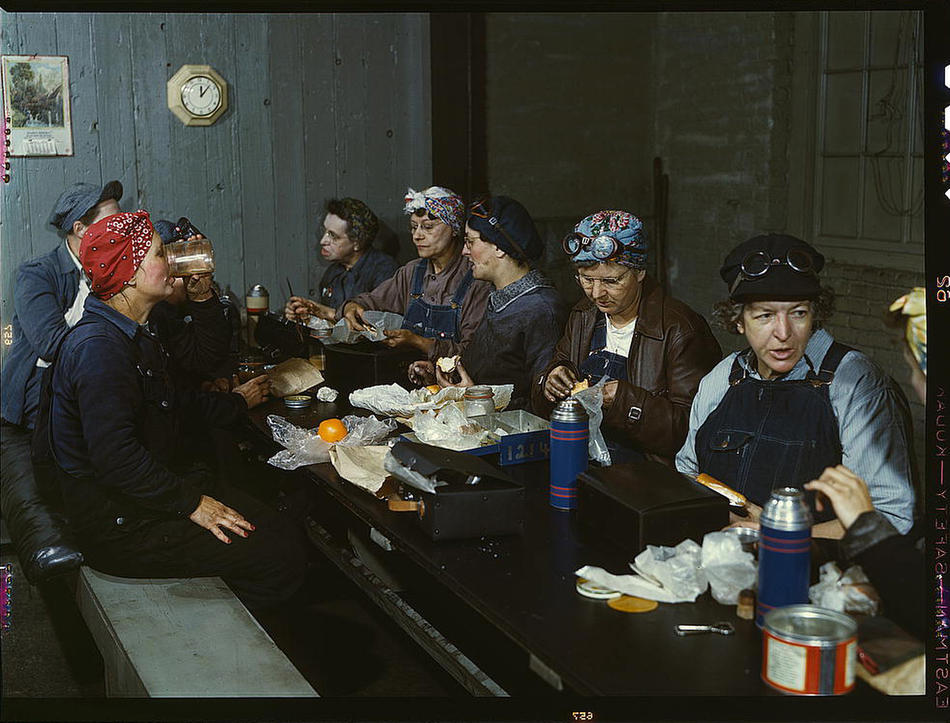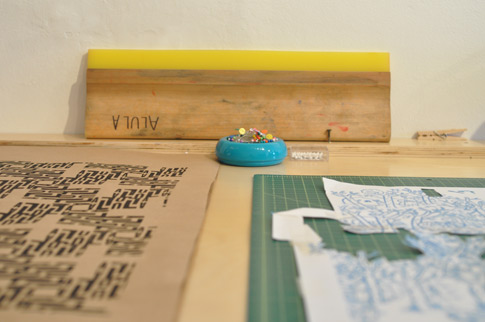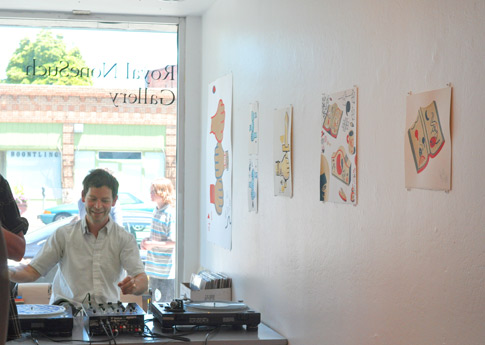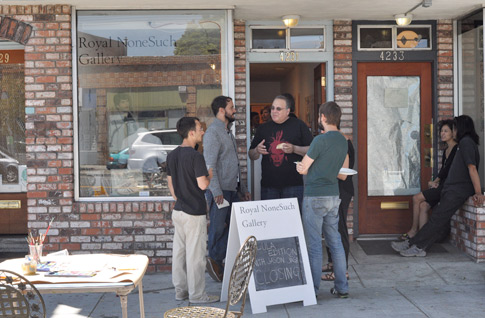Work of art: Online store for buyers, sellers
art meets design art world artist resources bay area blog collecting resources frontier new models others lives press
art meets design art world artist resources bay area blog collecting resources frontier new models others lives press
bay area blog events photography TPG10
A1 (Linard) from grahame weinbren on Vimeo.
Weinbren is doing a collaborative event at 01SJ in September
art and craft art meets design blog fashion neat projects
art and politics art world blog frontier new models opportunities others lives
art world arts funding blog curating exhibits internet new models reading list show me the money
artist resources blog businessy stuff CA collecting resources show me the money
blog exhibits fashion photography reblog

Women workers employed as wipers in the roundhouse having lunch in their rest room, Chicago and Northwest Railway Company. Clinton, Iowa, April 1943. Reproduction from color slide. Photo by Jack Delano. Prints and Photographs Division, Library of Congress
Back in 2006, the Library of Congress organized an exhibition titled Bound for Glory: America in Color that showcased little-known color images taken by photographers of the Farm Security Administration/Office of War Information (FSA/OWI).
Made from color transparencies taken between 1939 and 1943, these images change the way we see the past. I mean, there’s just so much more color. As silly as that seems to say, it makes these photos intimate and relate-able in a way that I haven’t felt before. The black and white images of this era neutralize the bright colors and patterns in the clothing, signs, and wallpaper. It makes it seem like this time wasn’t so long ago.
The photographs depict the effects of the Depression on America’s rural and small town populations, the beginning of the nation’s subsequent economic recovery and industrial growth, and the country’s great mobilization for World War II.
According to Wikipedia, these slides would have been some of the first of their time, as the chronology of the development of color transparencies look like this:
YOU CAN VIEW THE PHOTOS EASILY HERE
there is a book of these images too.
art and craft art world bay area blog events pictures
On Saturday we spent a lovely mid-day over at Royal NoneSuch Gallery for the closing party of Alula Editions‘ tenure there with Jason Jägel. They spent their time working out imagery and refining their printing techniques. Having just pulled the test prints for their first edition the day before, the results look pretty exciting.


Jason manned the tables.

Helena from Alula Editions

art meets design blog environment outside pictures
So smart! Best use of affordable materials I’ve seen in a while. Found at Garden Hortica on 7th in Old Oakland.

blog fashion others lives photography
“A meaningful life consists of a person struggling to make real, in the world he or she encounters at birth, the imaginary personage who constitutes his or her true self. The reason art matters is because it’s a testimony of this struggle.”
-Enrique Martinez Celaya, in Guide, 2002
found in Works and Conversations, #19
arts funding benefits blog businessy stuff
Oliver and I are thinking about fiscal sponsorship for TPG again and this time around we’re trying to learn as much as possible about the process before we invest our time in applying. I thought I would share what we’ve learned about how it works and what one should think about in choosing/applying for fiscal sponsorship.
$$$$$$$$$$
Fiscal Sponsorship allows organizations, individual artists, projects, or companies that have a non-profit mission to align themselves with a designated 501c(3) non profit organization and apply for grants and accept donations under their umbrella.
Why do people do it?
Many times it is simply too costly or time consuming for fledgling organizations or projects to set up legal non-profits. Fiscal Sponsorship allows organizations to learn the ins and outs of grant writing and test out whether a non-profit structure is a good fit for them. Sponsoring Organizations can create a bigger impact when multiple projects are pursuing their mission. They can also mentor and assist smaller organizations who may grow up to be big kid non profits. ..And I’m pretty sure some of the organizations see the profit they make through their administrative fees as a plus. This is more the case when they have over 50 sponsored projects (Tides Center, Fiscal Sponsorship Field Scan, pg10.) I’m not knocking them; they are providing a valuable service for projects that otherwise wouldn’t be able to get grants and it does take time and work to oversee the sponsored projects.
There are different ways that fiscal sponsorships are legally set up. According to “Fiscal Sponsorship: 6 Ways to do it right” by Gregory Colvin, the three most widely used fiscal sponsorship models are:
Model A: Direct Project
In this model, the Sponsoring Organization assumes all legal and fiduciary responsibility for the project. The sponsored project becomes, in essence, part of the sponsoring organization. The sponsoring organization maintains control over the project and all funds that pass through the project, not just funds that are donated to the project. Often in these cases the sponsoring organization takes care of payroll, benefits, and disbursement of all money. As they are responsible for the project, they may weigh in and have control over the direction of the project as a whole.
Model B: Independent Contractor Project
In an Independent Contractor relationship, the Sponsoring Organization still usually has ownership of the results of the project, but the project itself is treated as a separate legal entity. The organization, in essence, is contracting the project to do its work for them. The “work” I am talking about is the actions of the project that fulfill the sponsor’s mission.
Model C: Preapproved Grant Relationship
A preapproved Grant Relationship is one where the sponsoring organization and the sponsored project are completely separate entities. The organization approves the granting process and the fact that the project is pursuing aims that fulfills its nonprofit mission. Once it receives the funds, it re-grants the money (less its fee) to the project. Financial and legal responsibility stays in the hands of the project.
I found this chart on wikipedia especially helpful:
Most organizations charge between 5-10% of the funds that pass through them. Some will charge up to 15%, especially for government grants that have a lot of red tape to deal with. The average, according to The Tides Center, is 5.6% for non governmental grants and 7.7% for governmental grants. Most of the ones I have found in the Bay Area for Arts organizations range from 6-10%.
Some places require you to be a “member” of their organization in order to apply to be fiscally sponsored. These prices are usually up to $200/year.
The most important factor for the majority of organizations when deciding whether to sponsor a project is alignment of mission. In most cases, it simply works best for both parties and makes the most sense if the two groups share the same goals.
Though there are some national sponsors (like Fractured Atlas or NYFA), the second most important factor for most organizations is geographic location. A sponsored project should take location into consideration as well if they want to take advantage of non-profit sales tax exemptions. If they do, they need to be in the same state as their parent organization.
Every sponsor has a different program for their projects. Each offers different benefits, like advising on grant applications, legal stuff, and organizational/business development, discounts to events or classes, different promotional opportunities, different ways that they are able to accept donations (like credit card processing, monthly billing of donors, whether they can deal with non-monetary donations, etc).
They all also have different ways of handling the money. Some will cut you a check on demand, some on a regular basis, and a few have online tools to manage your account. Most will make you provide documentation for how the money is being spent. All these things are good to take into consideration when deciding who will be the right fit for you.
One last thing to take into consideration is the number of projects that an individual organization sponsors. While on one hand, the larger the number the more familiar they may be with how sponsorship works and they may have more tools and benefits as a result. But on the other hand, many granting organizations and foundations will only accept one application for a specific grant per organization. When there are 2000 projects under one umbrella, the chances are higher that you may find some conflict in this area.
So! In conclusion.
Some non-profits are very cautious about fiscal sponsorship arrangements and prefer to have a lot of control over the projects in order to ensure legality. (I’ve read one critique of this process likening it to money laundering.) But some are much more laid back. It seems every organization takes their own view on how it should work. The Tides Center sums up it’s review of Fiscal Sponsorship practices with the view:
As evidenced by the findings of this report, the array of policies and practices
employed by fiscal sponsors is wide ranging. From large to small,
sophisticated to naïve, and focused to broad, there clearly is no “typical”
fiscal sponsor. What is clear, however, is that there is a growing number
of organizations involved in fiscal sponsorship with increasing project
loads. Few of these organizations feel confident that they are “doing it
right” and, due to the complexities of the law and tax codes, there is good
reason for that lack of confidence.
Go out and be sponsored! Maybe?
Here are some resources to find sponsors in your area.
National Network of Fiscal Sponsors through the Tides Center
Foundation Center: A comprehensive listing of websites, guides, and publications about fiscal sponsorship. They also have a web video explaining fiscal sponsorship.
art and craft artist resources blog businessy stuff internet others lives
art market art world blog businessy stuff hear it value of art
art and politics bay area blog events public art talking TPG artists

Ann Chamberlain, Untitled Installation 2, 2006. Ink on graph paper, fifty sheets, 8.5 x 11 inches.
A two-day symposium in honor of former SFAI faculty member and artist Ann Chamberlain, People and Places launches a sustained inquiry at SFAI into contemporary public practices. Pursued in conventionally artistic or increasingly hybridized, permissioned or nonpermissioned, and publicly underwritten or privately supported ways, the work of cultural producers in the public sphere is ongoing.
People and Places is structured around a series of open-ended questions relating to this vital strain of cultural activity: What does it mean for a contemporary artist to work in public settings or to solicit exchanges with the general populace? How do notions of “generosity” as a mode of social interaction, of “storytelling” as a project of collective history, and of “community” as a way of defining common ground inform creative strategies of public engagement? How are such negotiations located in particular places and enacted within particular social and political contexts?
Participants:
Andrea Bowers, Glen Helfand, Jessica Hobbs, Walter Hood, Helena Keeffe (TPG #11), Julie Lazar, Malcolm Margolin, Jeannene Przyblyski, Pedro Reyes, Susan Schwartzenberg, and Natasha Wheat
SFAI Lecture Hall
800 Chestnut Street
San Francisco, CA 94133
Free and open to the public
Lego Hello World
I wish all my printers were made of legos.
LIFE photo archive hosted by Google
Images from Life Magazine going back to 1860′s, hosted by Google
Coming Face To Face With The President
Well crafted story about an under-heard point of view.
In California, Pot Is Now an Art Patron
A new funding source for the arts – reaping big rewards and funding many projects. It’s pot.
Notes on Portraiture in the Facebook Age
Celebrity Book Club: A List to End All Lists
Because, well, it’s sortof awesome.
Are "Artists' Statements" Really Necessary?
The pros and cons about that nemesis for most artists.
This to That
You tell it what you’ve got and it’ll tell you what to glue them together with.
Work of art: Online store for buyers, sellers
Not the TV show! Kelly Lynn Jones from Little Paper Planes is interviewed on her project, gives us a cheat sheet to local affordable art resources.